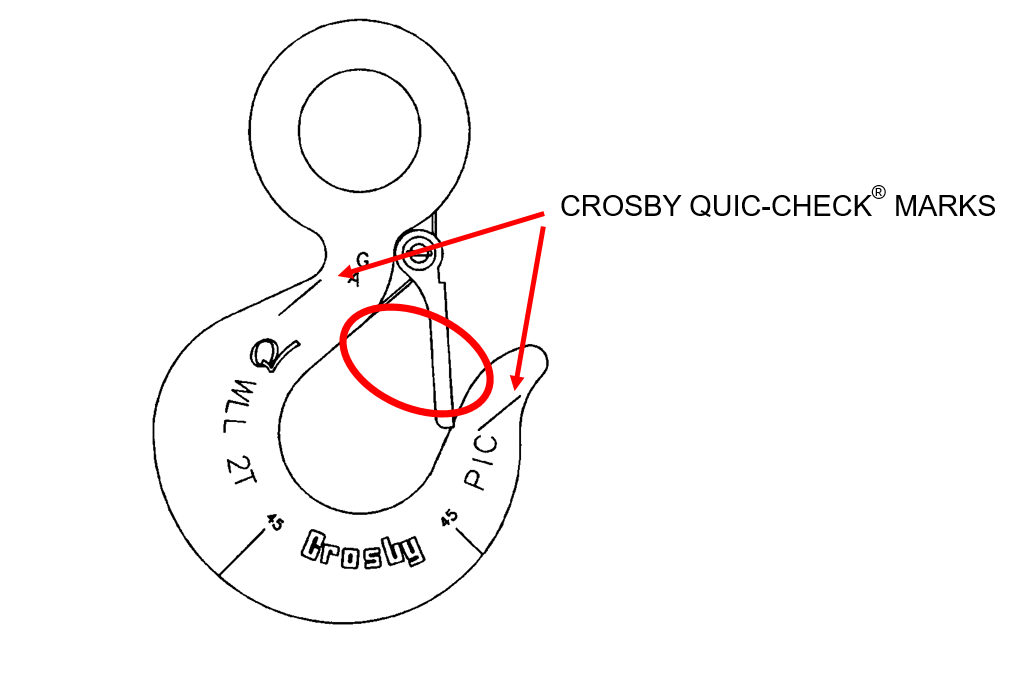Do you know how much a hook throat can be spread (open) before you have to remove it from service? Crosby is here to clear it up.
The Crosby patented QUIC-CHECK® incorporates the strategic placement of marking indicators on traditional rigging products to indicate reference points designed to enhance the safe and proper use of Crosby products.
There are two types of QUIC-CHECK® marks forged on the hook:First: Angle Indicators
This indicates the maximum included angle allowed between two sling legs in the hook. They also provide the opportunity to approximate other included angles between two sling legs.
Second: Deformation Indicators
These two marks are placed right below the eye and on the hook tip. This allows for a quick check measurement to determine if the throat opening has changed, indicating abuse or overload.

To check, use a tape measure to measure the distance between the marks. The marks should align to either an inch or half-inch increment. If it does not, the hook must be inspected further for possible damage.
B30.10 states the following under the removal criteria section for hooks:
Any distortion causing an increase in throat opening of 5%, not to exceed ¼” in. (6mm) or as recommended by the manufacturer.
Crosby states:
“Hooks which can be determined to have any measurable deformation should be removed from service. Any detectable bending or twisting out of the natural plane of the hook or any visual or measured increase in the throat opening is cause for removal from service.”
Using hooks exceeding the recommended hook throat opening can result in possible equipment failure and injury to personnel.

